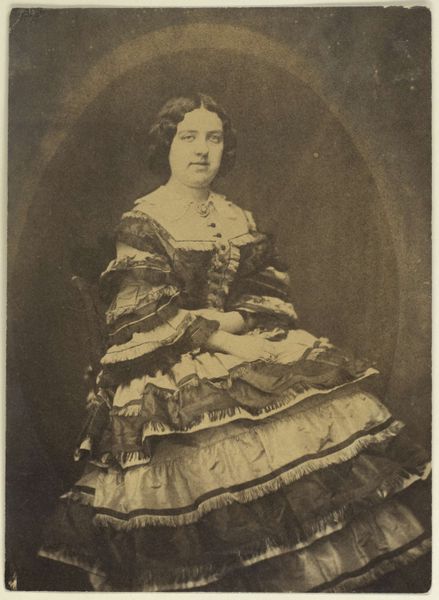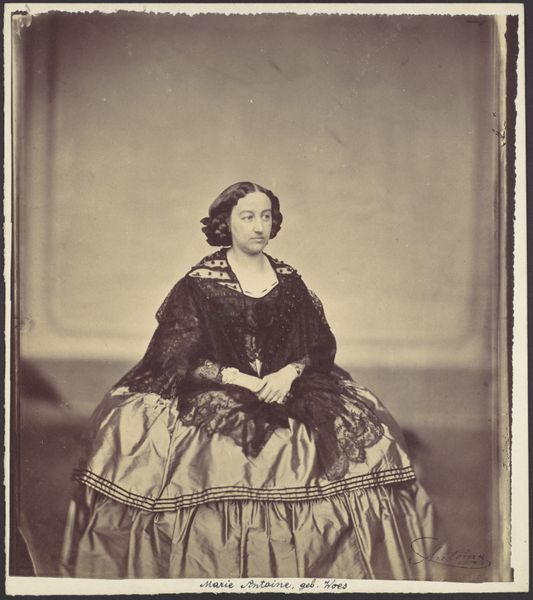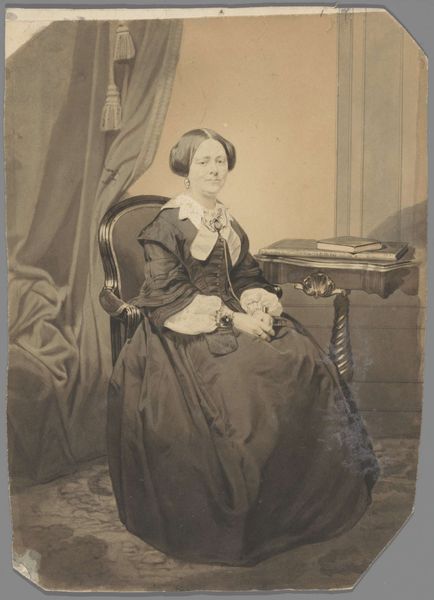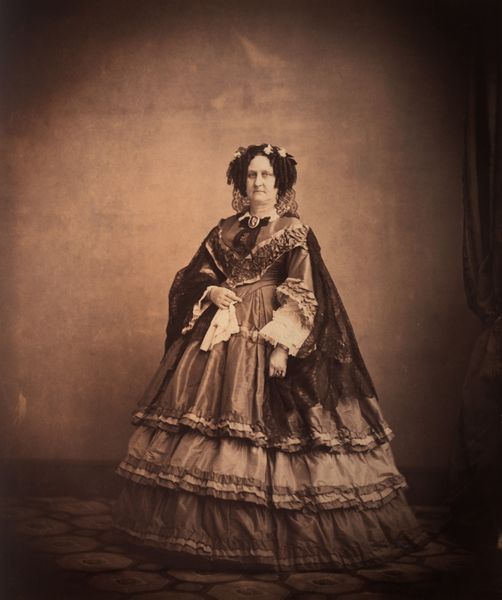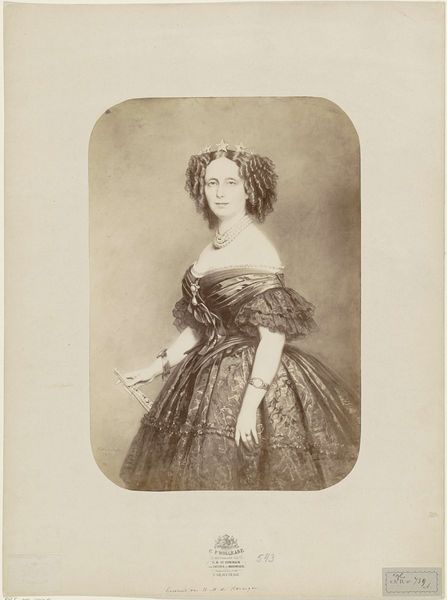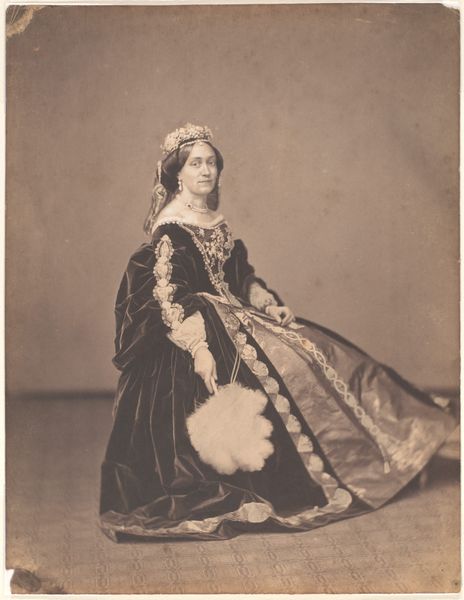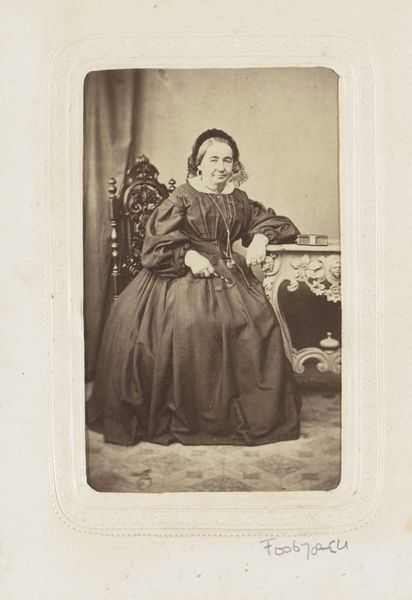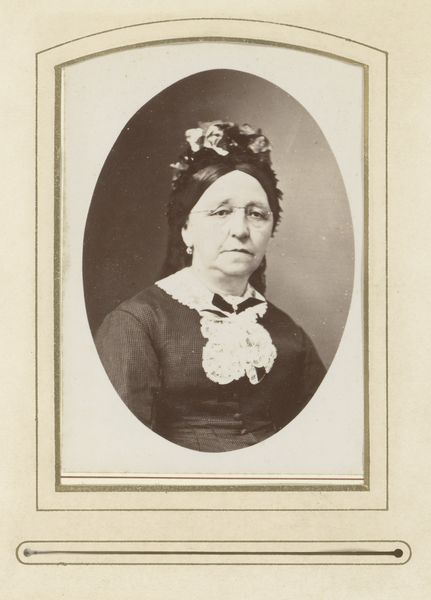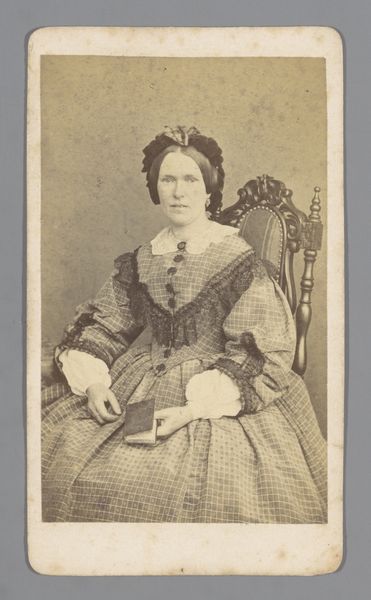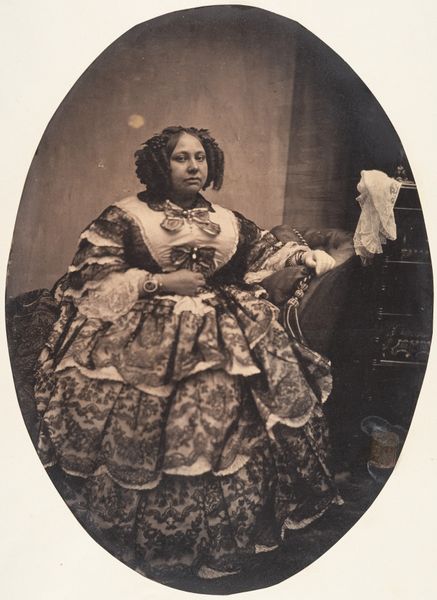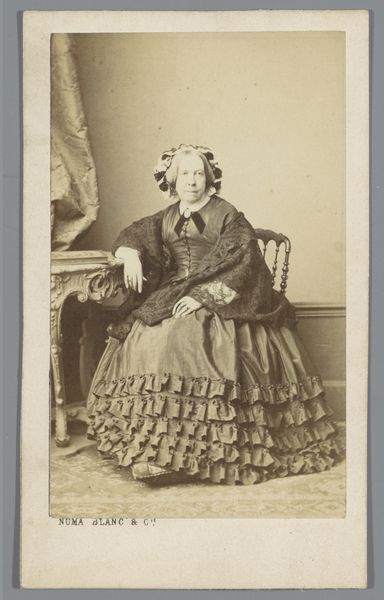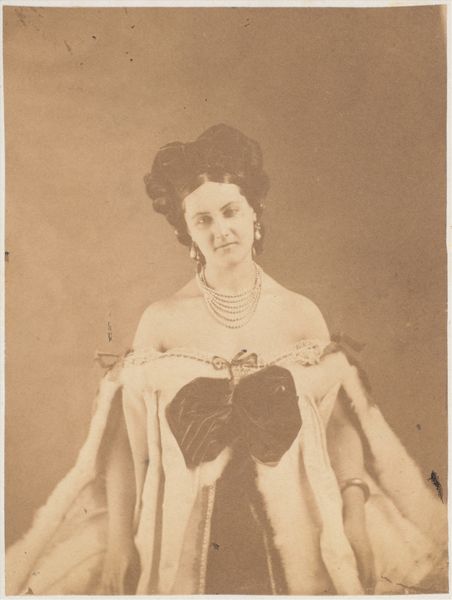
daguerreotype, photography
#
portrait
#
daguerreotype
#
photography
#
historical photography
#
historical fashion
#
19th century
Dimensions: Image: 20.6 x 15.6 cm (8 1/8 x 6 1/8 in.)
Copyright: Public Domain
Curator: Look at this daguerreotype, "Madame Medori," created sometime between 1855 and 1859 by Mathew Brady. Editor: She looks incredibly solid. Rooted, even. Like she’s grown up through the floor. Is that harsh? The striped fabric cascading around her just anchors her there. Curator: It’s fascinating to consider the material processes behind an image like this. Brady was a prominent photographer who documented many figures. The daguerreotype itself, an early photographic process, involved treating a silver-plated copper sheet with fumes to make it light-sensitive. Each image is unique, a direct positive. Editor: And each image requires so much…stillness. Imagine sitting for that portrait, not moving a muscle while light etches you onto metal. It’s almost sculptural, the way it molds her image. Her gaze is intense and feels very controlled, yet the rest is flowing and the stripes emphasize the roundness and solidity of her figure. Curator: Indeed. Consider the labor involved not only in creating the photograph, but in producing Madame Medori's garments: weaving the fabric, sewing the dress. These processes often remain invisible when we discuss portraits like this, overshadowed by the sitter's status and the photographer's name. Editor: But those stripes! They pull you in. Are they meant to convey power, like…like the bars of a cage, only wrapped around her instead? There’s something both opulent and confining about the way the fabric drapes. Curator: Or is it simply the height of fashion? Analyzing portraits like this involves deciphering a visual language tied to social class and aspirations. The manufacturing process, of course, shaped what was even available, but it always returns to issues of class and access. Who could afford this image taken, the clothing depicted, and the luxury to pose? Editor: It's a captured moment—and a performance. I'm still trying to get a hold of the emotion or idea or truth that might be at work. Overall, seeing Madame Medori makes me pause and rethink assumptions about historical photography. I'm reminded that every element, the light, the cloth, the very metal this is printed on carries so much intention. Curator: Absolutely. And by looking closely at how it was made, we begin to uncover that intention. Thanks for offering that insight.
Comments
No comments
Be the first to comment and join the conversation on the ultimate creative platform.
